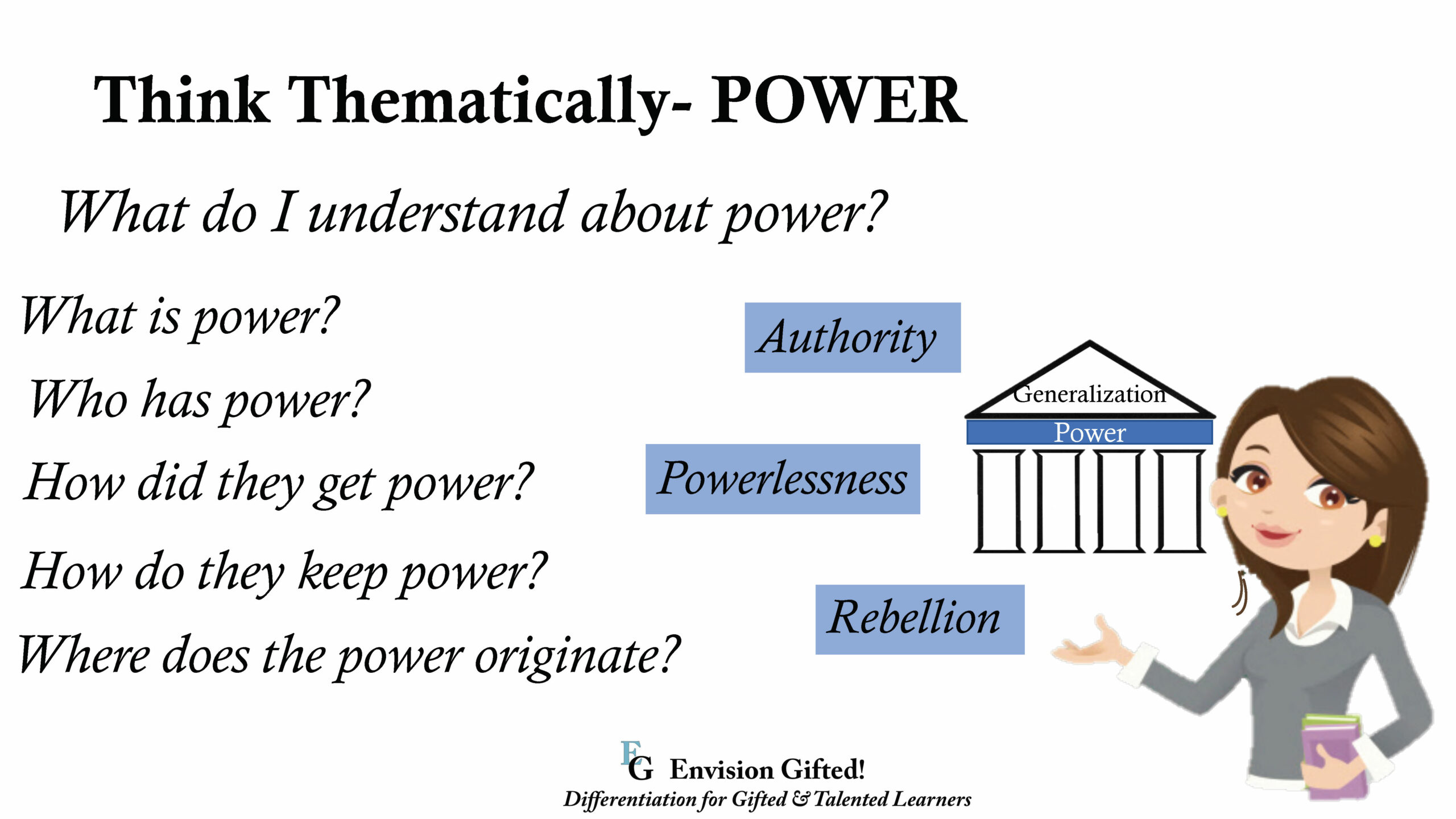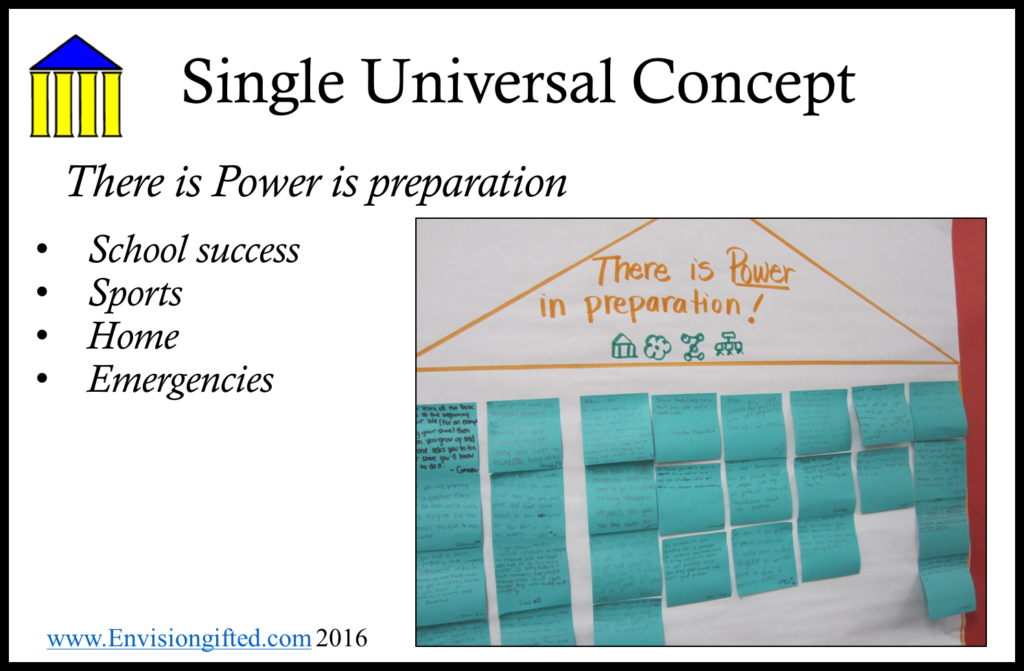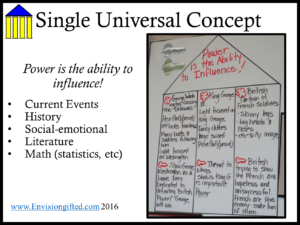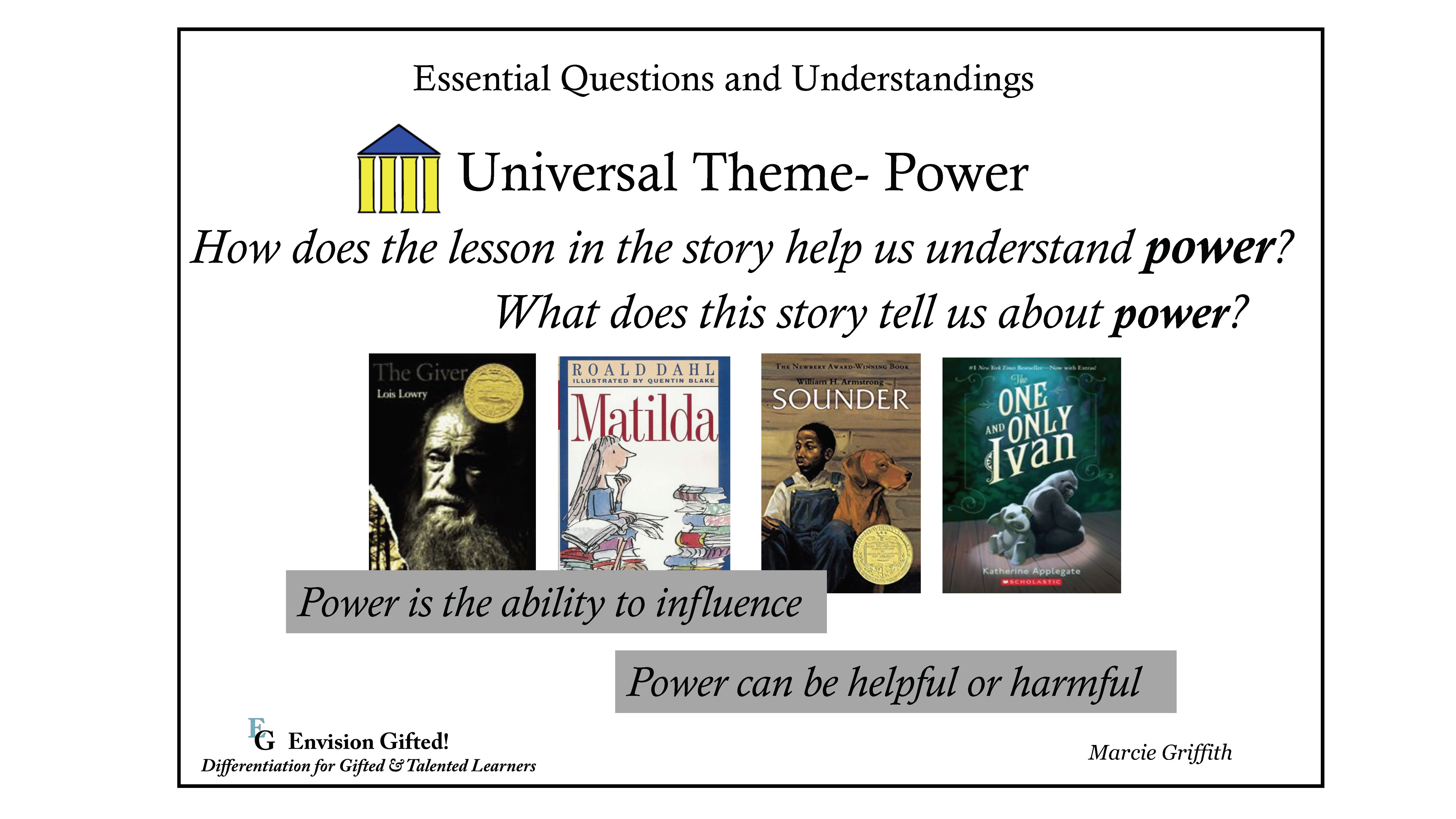Power-
Power is one of my favorite universal themes.
Start by priming your own brain to think thematically.
What is power? Where does it exist/who has it? Why does it exist?
Gratitude Has the Power to…
This is a great example of exploring a universal theme throughout the year. It was designed and developed by a colleague of mine, Valerie Del Carlo, 6th Grade GATE teacher in Garden Grove.
Students explored the intersection of power and gratitude and were challenged to complete and prove the generalization: Gratitude has the power to…
Interviews with family elders and in-class interviews of veterans allowed students to better understand and come to appreciate the concept of gratitude.
Students processed their learning through discussions, writing and art. The project culminated in a ceremony and video honoring those who participated.
This 4×4 canvas was created by students. Check out this video of the project by clicking on the art to the left.
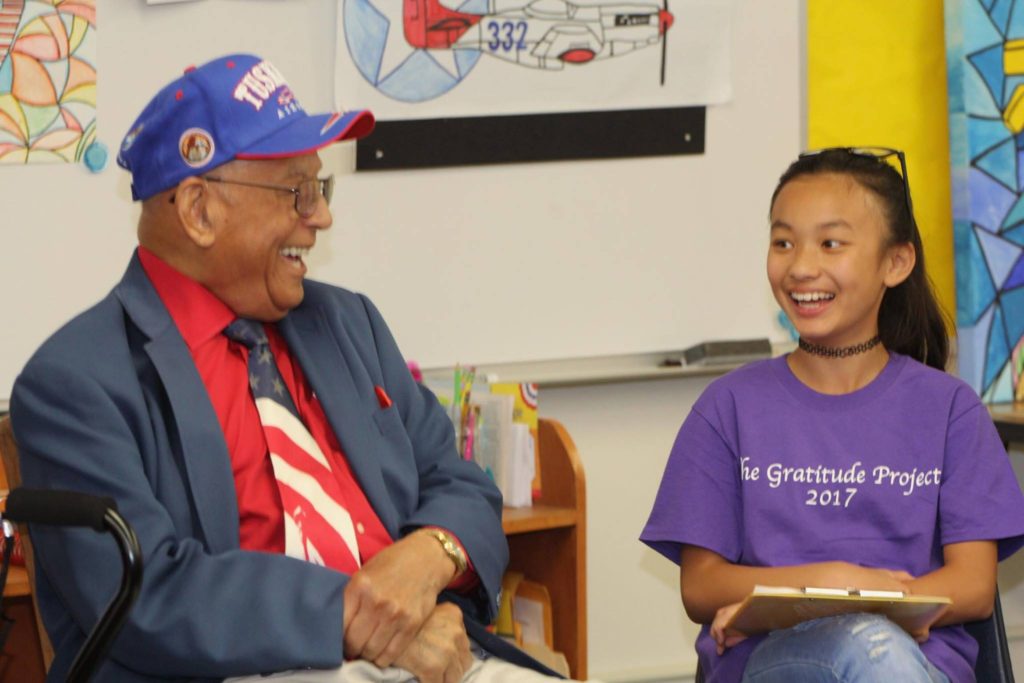
If you would like more information about this project click here or go to http://www.thegratitudeprojects.com.
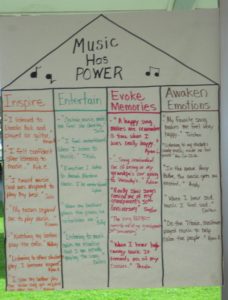 Music Has Power!
Music Has Power!
Here, we examined the power of music. I preselected four pieces of music, each designed to elicit a different reaction from the listener. I started the lesson with students sitting at their desks and asked them to close their eyes as they listened to a piece of music. I wanted their eyes closed so they could better focus on the music.
First, I played an upbeat clip from the song, “Shout” by the Temptations. As it ended, I asked students to open their eyes and reflect on how they felt. Just a quick jot of their feelings. Students shared out their reactions with the rest of the group and I charted their responses. I repeated the process, this time playing a clip from Beethoven’s, “Moonlight Sonata“. Again, I had the students reflect on their reaction. These were obviously very different from their reactions to the first piece. I repeated this process with two other pieces. Each clip was brief, but long enough for students to experience the essence of them.
Afterward, we examined the reactions I had charted on the board and together we generated categories into which they would fit. Each category was added to the chart (seen here). Students were directed to provide evidence for each category. The discussion was rich as students spoke to how music has the power inspire people to action; proving that music has the power to awaken emotions, entertain, and evoke memories.
I left that chart up and referred back to it throughout the rest of the year. This was especially appropriate in social studies. The idea of music having the power to inspire fit in nicely as we studied exploration and the California Gold Rush. This helped the students to gain a deeper understanding of those concepts. This also fits nicely with 5th grade social studies (Freedom and Slavery, American Revolution, and Westward Expansion).
 Power May be Used or Abused!
Power May be Used or Abused!
As a culminating activity at the end of Theme 3 (5th Grade- Houghton Mifflin), students were directed to prove the generalization using evidence from the stories “And Then What Happened Paul Revere?”, “Katie’s Trunk“, and “James Forten: Now is Your Time“.
